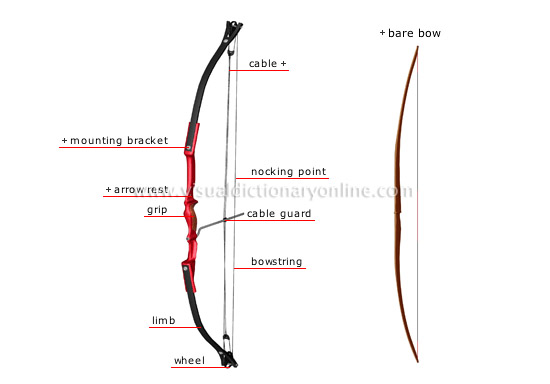compound bow
Bow that uses a system of cables and wheels to increase its shooting power; it requires less effort on the part of the archer when aiming.
wheel 
Small pulley attached to the ends of the limbs; it absorbs part of the force from the shot and it increases the shot’s accuracy.
limb 
Flexible part that stores the potential energy as the bow is stretched.
bowstring 
Fibers secured to a bow that were stretched to fire an arrow.
cable guard 
Part that spreads the bowstring cables apart to prevent them from touching the arrow as the latter is nocked and shot.
grip 
Part between the two limbs that is gripped to manipulate the bow.
arrow rest 
Part against which the arrow shaft rests as the nock in fitted into the bowstring.
mounting bracket 
Metal part with a threaded opening; a screw goes into it to attach the limb to the bow’s grip.
nocking point 
Mark on the bowstring where the arrow’s nock fits.
cable 
Assembly of steel wires that runs around the wheels to increase the bow’s power.
bare bow 
Bow made up of a piece of wood and a string that are joined without screws; it is usually very powerful but is less accurate than a compound bow.







